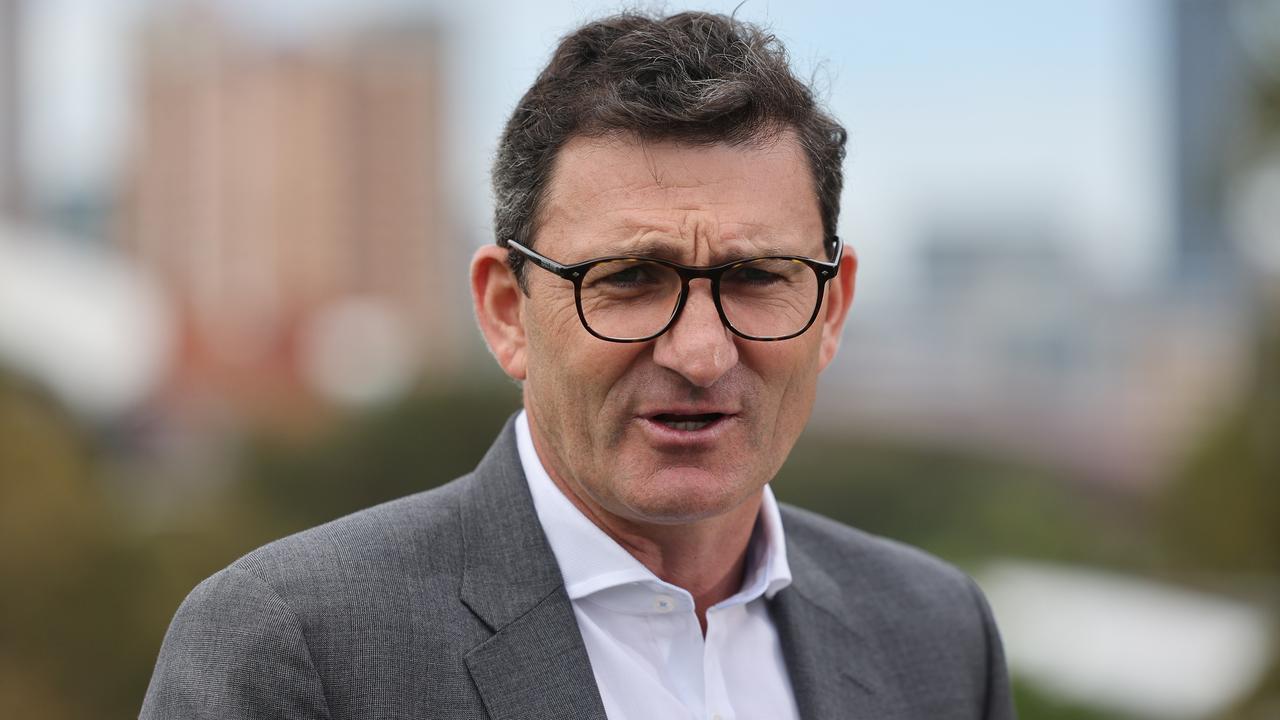AFL fixture 2023: Why the AFL should recalibrate its weighting rule that dictates fixture difficulty
The Hawks have essentially the same draw difficulty as top-four outfits Melbourne and Collingwood in 2023, but Sam Landsberger has revealed a different weighted model in the aim of fairness.

The formula that determines who plays who in an AFL season needs recalibrating.
The AFL splits the 18 clubs into three brackets of six, based on their ladder position after the grand final. It then assigns them six opponents to play twice.
The introduction of a 24th round in 2023 should’ve balanced it nicely. Three groups, six double-ups (where you play a team twice) – a neat equation.
Top-six clubs play three double-ups against fellow top-six clubs, two double-ups against middle-six clubs and one double-up against a bottom-six club. That’s a tough run for the contenders.
Bottom-six clubs play three double-ups against fellow bottom-six clubs, two double-ups against middle six-clubs and one double-up against a top-six club. That’s a soft run for last season’s easybeats.
Then, the middle-six clubs play two double-ups against teams in every bracket. That’s an average run for those in the middle of the road.
And in 3, 2, 1 – just like the weightings — there is a fairer fixture.
It’s the simplest way to assign the double-ups, and it’s a theory that was talked about in the industry over the weekend.
However, the league has gone in a slightly different direction.
This is the AFL’s formula:
* A MINIMUM of two, and maximum of three, double-up matches against teams in your bracket of six;
* PLUS either one or two double-up games in each of the other two groups of six.
On Saturday that spat out some peculiar results. For example, Melbourne and Collingwood were in this year’s top-six bracket while Hawthorn was in the bottom six.
Yet all three clubs have essentially the same draw difficulty in 2023. They each face two top-six opponents twice, two middle-six opponents and two bottom-six opponents.

The Demons play the following clubs twice: Brisbane and Sydney (top six), Carlton and Richmond (middle six) and North Melbourne and Hawthorn (bottom six).
The Magpies play the following clubs twice: Geelong and Brisbane (top six), Carlton and Port Adelaide (middle six) and Adelaide and Essendon (bottom six).
The rebuilding Hawks play the following clubs twice: Melbourne and Fremantle (top six), Western Bulldogs and St Kilda (middle six) and GWS and North Melbourne (bottom six)
Hmmm. On balance, those fixtures are average (2-2-2) — and should therefore be reserved for average clubs ... like ones in the middle bracket.
Nine clubs received double-ups that checked out under weighted model proposed here: Brisbane, Carlton, Geelong, Gold Coast, GWS, North Melbourne, Port Adelaide, Sydney and West Coast.
Fixtures for the other nine clubs appear slightly unbalanced, such as the Hawks-Dees-Pies example.
Or Richmond and Western Bulldogs, who should probably play two bottom-six clubs as middle-six teams, but only play one (West Coast and GWS, respectively).
Yet Fremantle, a top-six club, plays bottom-six teams West Coast and Hawthorn twice each when perhaps it should only receive a double-up against the Eagles.

The 3-2-1 weighting would safeguard the AFL’s repeat blockbusters, too.
No matter where Adelaide and Port Adelaide finish on the ladder, the league would have the flexibility to schedule two Showdowns.
It’s not as if clubs are seeded within their brackets – although in a perfect world they would be.
Geelong – the No.1 seed in the top bracket – would face the best of the bottom six (13th on the ladder) twice, sparing the bottom five clubs from multiple clashes against the reigning premier.
However, the AFL and broadcasters would understandably never sign off on a lottery-style fixture when it would cost them so many repeat marquee matches.
Perhaps that was was a factor that counted against a fairer 3-2-1 weighting model. Perhaps the league wanted to maximise flexibility so it could still maximise the fixture.
For example, imagine if Collingwood finished in the top six and Carlton and Essendon finished in the bottom six. Under the 3-2-1 weighting the AFL would be powerless to book the Magpies double-ups against both arch-rivals.
But that’s OK. The Magpies and Blues met only once in 2019 and 2017 and the sky didn’t fall in.
Surely fixture fairness is more important.

BRACKETS FOR THE 2023 FIXTURE
TOP SIX: Geelong, Sydney, Collingwood, Brisbane Lions, Melbourne, Fremantle
MIDDLE SIX: Richmond, Western Bulldogs, Carlton, St Kilda, Port Adelaide, Gold Coast
BOTTOM SIX: Hawthorn, Adelaide, Essendon, GWS Giants, West Coast, North Melbourne
HOW SAM LANDSBERGER THINKS THE DOUBLE-UPS SHOULD WORK
TOP SIX: Three v top six, two v middle six, one v bottom six
MIDDLE SIX: Two v top six, two v middle six, two v bottom six
BOTTOM SIX: One v top six, two v middle six, three v bottom six




